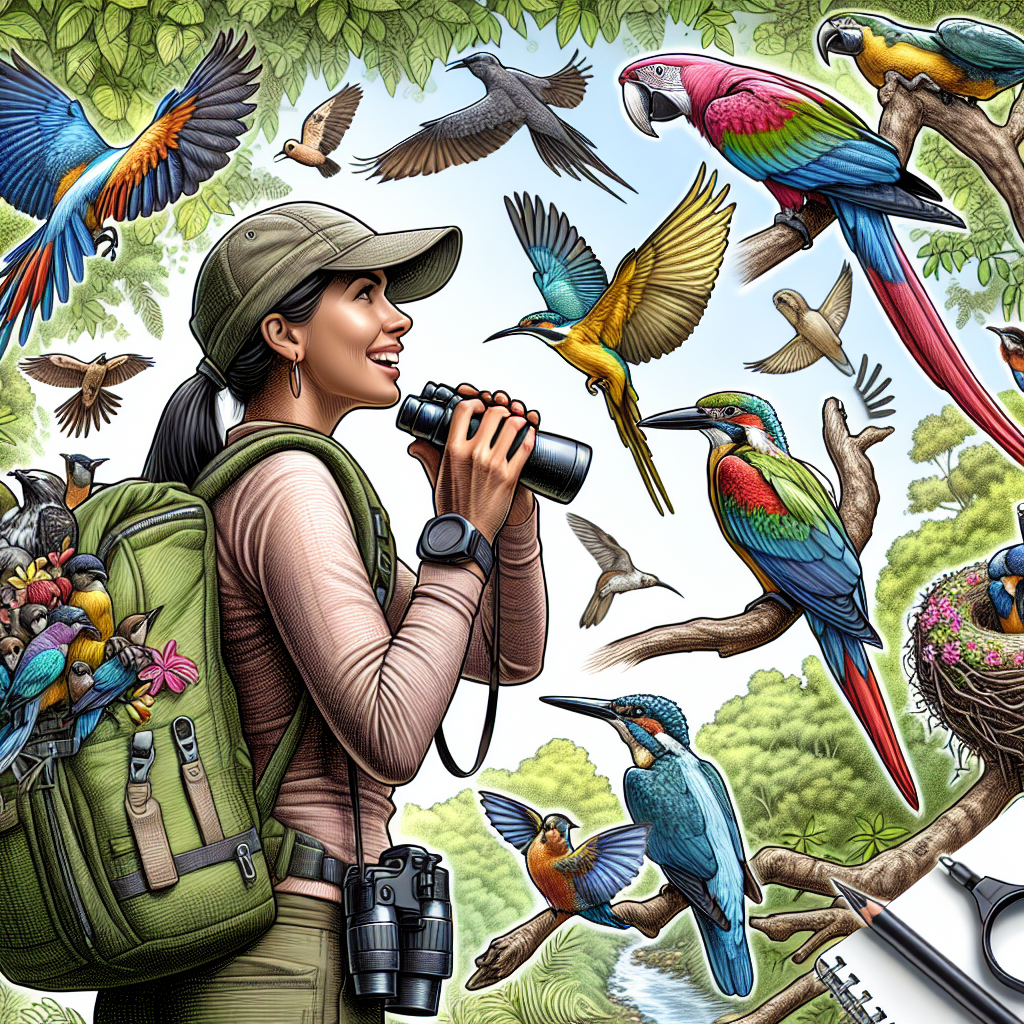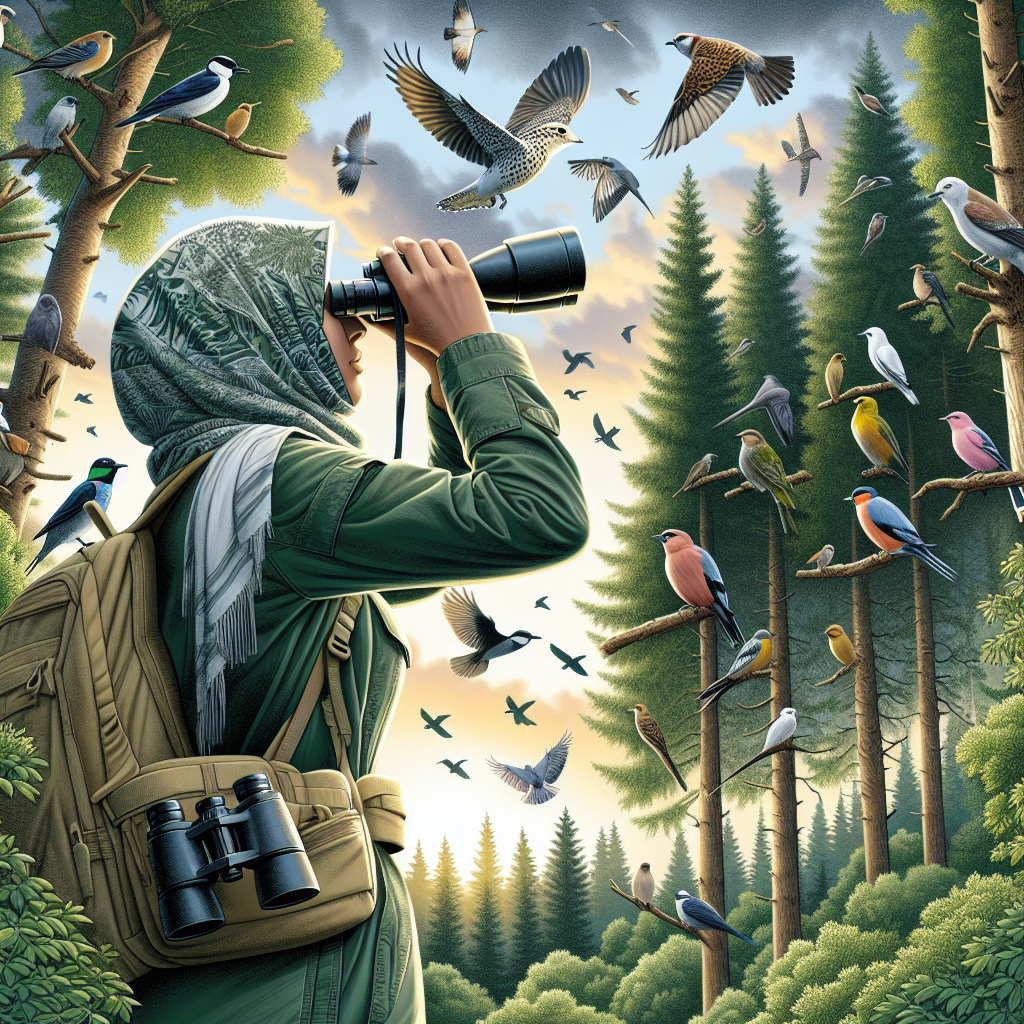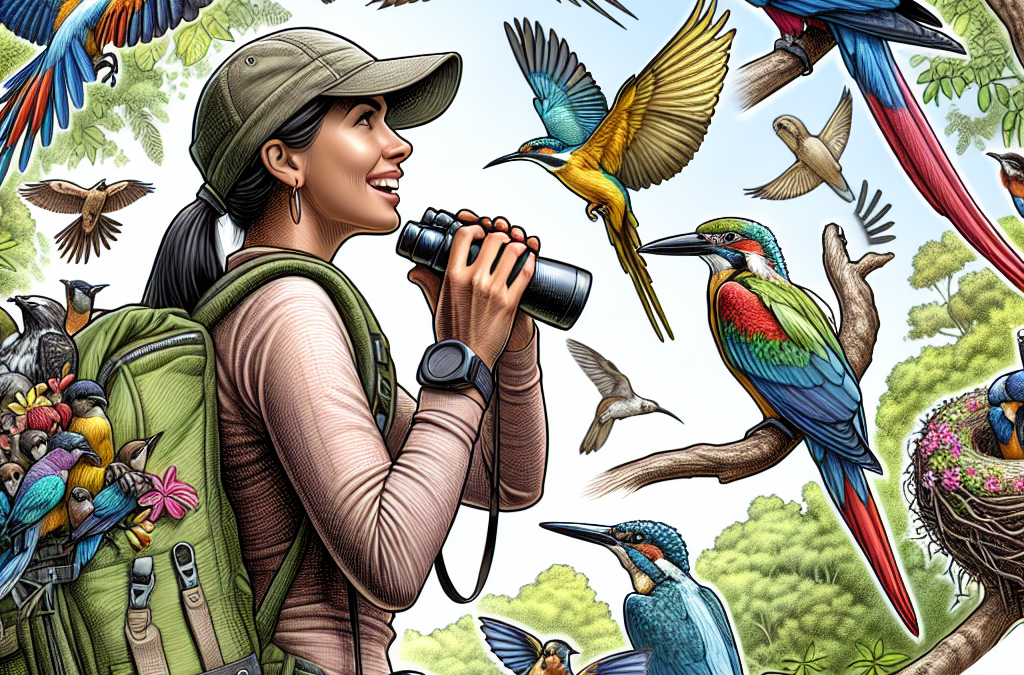Embark on a thrilling adventure with “Bird Watching While Hiking: A Birder’s Guide.” Exploring the wonderful world of birding, this guide is your ultimate companion in making your hiking adventures more enjoyable and fulfilling. It’s a comprehensive source that fuses your love for nature hikes with a bird enthusiast’s passion, offering tips, strategies, and information on the diverse species you may encounter on your journeys. Uncover the sights and sounds of nature from a bird’s view, and transform every hike into a bird-watching wonder.

Understanding Birding Basics
Bird watching, commonly referred as birding, is an activity dedicated to the observation and study of birds. As a hobby, it’s more than just enjoying the beauty of these feathered creatures—you end up appreciating the diversity of bird species and understanding their roles in the natural environment.
What is birding?
Birding is the hobby of observing birds in their natural habitat. It’s not just about identifying different species, but also about appreciating the individual behaviors of birds, their songs, flight patterns, and even their feeding habits. Birding can take place anywhere, from your own backyard to local parks, wildlife reserves, and even during hikes in the mountains.
The importance of birding
Birding is not just a relaxing and enjoyable hobby—it’s also a way to contribute to the conservation of bird populations. Birders often record their observations, which can contribute valuable data towards understanding bird behavior and distribution. This gathered information can help conservationists in developing strategies to protect and preserve biodiversity.
Basic terminology in birding
In birding, there are a few essential terms you should be familiar with. A ‘lifer’ is a term used for the first time you see a species. ‘Birding by ear’ refers to identifying birds by their calls or songs. A ‘twitcher’ is a birder who is focused on adding as many species as possible to their ‘life list’.
Essential Equipment for Bird Watching
Before setting out on your birding adventure, it’s important to be prepared with the right equipment. This can enhance your bird watching experience and help you better identify and observe bird species during your journey.
Binoculars
Binoculars are a birder’s best friend. They allow you to observe birds up close without disturbing them. Choose binoculars with good clarity and magnification. It’s recommended to test several different pairs to find one that suits your eyes and is comfortable to carry on a hike.
Field Guides
Field guides provide detailed information on bird species, including their appearance, behavior, and habitats. These guides are often illustrated or contain photographs to help you identify different species. Consider both traditional books and digital options that can be easily accessed on a mobile device.
Notebook and pen
Maintaining a field notebook is a fundamental part of birding. It allows you to record what you observe—be it the species identified, their behaviors, or even just the color patterns and sounds. These notes can be a valuable reference for your future birding adventures.
Camera
While not necessary, a camera with a good lens can help you capture wonderful moments in birding. It can also help with identifying birds once you’ve returned from your hike.
Hiking gear for bird watchers
Proper hiking gear is essential when birding in the great outdoors. This includes comfortable and sturdy footwear, appropriate clothing for the weather and terrain, and essentials like water, snacks, sunblock, and insect repellents.
Choosing Your Birding Location
The thrill of birding lies in observing a variety of bird species. Knowing how to choose your birding location will enrich the experience by ensuring you see a broad array of birds.
Research potential bird hiking locations
Spend time researching potential birding locations. Check online resources, local guides and talk to experienced birders. Make sure to take note of the kinds of bird species commonly found in these areas.
Understanding habitat preference
Different birds prefer different habitats. While some may thrive in dense forests, others prefer open fields, wetlands, or even deserts. Understanding this can help you pick the right location depending on what species you hope to observe.
Seasonality and Migration patterns
Bird species vary throughout the year due to migration patterns. The best times to bird may be during the spring or fall migrations, when a larger variety of birds pass through an area. Learn about these patterns to maximize your birding experience.
Identifying Birds While Hiking
Now that you’re out in the field with your binoculars and field guide at the ready, the exciting part begins: identifying and observing birds.
Using Field Guides
Use your field guides to help identify different bird species. Look for key characteristics such as the shape of the bird, colors and patterns of feathers, the size, and presence of any distinctive features.
Characteristics for bird identification
When identifying birds, note their physical characteristics— size, shape, color, beak type, and leg length. Also consider their behavior— how they fly, their calls and songs, and how they interact with their environment.
Common bird species while hiking
The common bird species you encounter will largely depend on the location and season. From flitting warblers to soaring raptors, every location has its unique array of resident bird species. Take the time to learn about these, making it easier to identify and appreciate them.

Bird Behaviors to Observe
One of the joys of birding is watching bird behavior. Birds display a variety of actions that are fascinating to observe and can help in identification.
Bird songs and calls
Bird songs and calls are a vital part of bird identification, and often the first clue of their presence. Pay close attention to these sounds, as each species has its unique musical notes.
Flight patterns
Observe how a bird flies. Birds have distinctive flight patterns that can aid in species identification—whether it’s a straight consistent flight, a series of flaps and glides, or an acrobatic display in the air.
Feeding behaviors
Birds feed in various ways and oftentimes, the way a bird feeds can offer clues about its species. Some birds may be seen diving for fish, while others scour the forest floor for insects or flit from flower to flower sipping nectar.
Mating and breeding behaviors
Many birds have remarkable mating and breeding behaviors, from intricate courtship displays to building intricate nests. If you’re lucky, you may be able to observe such interesting behaviors during your birding hike.
Hiking Etiquettes for Birders
As birders, it’s crucial to respect the environment and other hikers. Here are some birding etiquettes to follow during your hikes.
Respect wildlife
Always observe birds from a distance to avoid disturbing them, especially during nesting season. Remember, they are wild creatures and should not be handled or fed.
Leave no trace principle
The principle of ‘Leave No Trace’ encourages outdoor enthusiasts to respect nature by reducing their impact on the environment. This includes disposing of waste properly, staying on trails, and minimizing the impact on wildlife.
Courtesy towards other hikers
Whether they are fellow birders or not, treating other hikers with courtesy is crucial. Keep noise levels to a minimum to not disturb both the wildlife and other nature enthusiasts.
Challenges in Bird Watching While Hiking
Despite the joy and excitement, bird watching does have its challenges. Being prepared for these can strengthen your ability to overcome them.
Weather conditions
Harsh weather, whether it’s extreme heat, cold or rain can make birding a challenge. Birds also alter their activities based on the weather, so it’s crucial to plan your birding hikes in favorable conditions.
Terrain difficulties
Some bird species inhabit areas that are difficult to navigate, like dense forests, high altitudes or marshy wetlands. Sturdy boots, sufficient water, and potentially even hiking poles can help you tackle these terrains.
Bird sightings guarantee
Birds are wild creatures, and there’s never a guaranteed sighting. You might not always spot birds you expected, and that’s okay. Birding is as much about enjoying the process as it is about the end result.
Tips for Successful Birding
To maximize your birding experience, here are some helpful tips.
Best time for bird watching
Early mornings are usually the best time for bird watching, as many bird species are most active then, feeding and calling out their territory. Twilight can also be a productive time.
Patience
Patience is key in birding. Occasionally, you may need to wait quietly for extended periods for a bird to appear. Remember, the waiting makes the sighting much more rewarding!
Maintaining a field notebook
Keeping a field notebook or journal is beneficial. Not only does it serve as a record of your birding experiences, it helps you remember the behaviors, calls, and appearance of different bird species.
Benefits of Combining Hiking and Birding
Combining hiking and birding can result in unique benefits that enhance your overall experience and increase your appreciation for nature.
Health benefits
Hiking with an added focus on birding turns your walk into a mindful exercise. You stay active while your mind is engaged in observing and identifying birds.
Enhanced appreciation for nature
Birding increases your awareness and appreciation of nature. It prompts you to explore new environments, learn about different ecosystems and recognize the importance of conservation.
Chance to encounter rare species
Hiking in various terrains offers the chance to encounter rare and unique bird species that you may not see otherwise. Every hike could turn into a thrilling birding adventure.
Taking Birding to the Next Level
If you want to further engage with birding, there are several avenues to explore.
Bird photography
Bird photography is an exciting way to take your birding passion to a new level. It requires skill and patience, but the reward of a stunning bird photo is worth it.
Using birding apps and technology
Today, various apps and technology can assist in bird identification, log your sightings, and even play bird calls. Use these tools to enhance your birding experience.
Getting involved in citizen science projects
Join in citizen science projects that track bird populations, migration, and behavior. Your contributions can help scientists collect data that supports bird conservation efforts.
Remember, birding is a journey—not a race. Take your time to enjoy each birding experience, celebrate the successes and learn from the misses. Happy birding!

